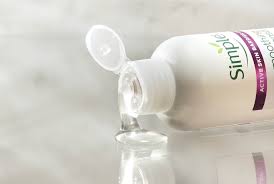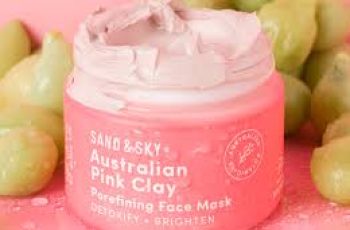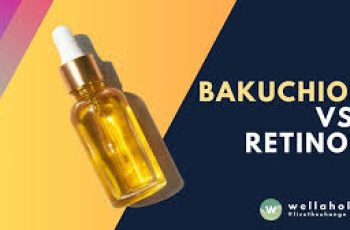
The Science of Lactic Acid in Skin Care
Have you ever wondered why lactic acid has been a popular skin care ingredient for thousands of years?
Derived from natural sources like milk, fermented fruit or yogurt, this hydroxy acid has many benefits for dry, resistant skin.
In this comprehensive guide, we explain what lactic acid is, where it comes from, its benefits, possible side effects and its uses in skin care.
But before we get into the details, let’s start with the basics.
Know your Baumann skin type to ensure you only buy products that are right for your skin!
The Best Lactic Acid Products
If you know this ingredient is right for your Baumann skin type and would like to receive our product recommendations, you can find them here!
What is Lactic Acid?
Lactic acid in skin care is a hydroxy acid that can play a positive role in many everyday situations. (3) Lactic acid is an alpha hydroxy acid (AHA) that comes from natural sources like milk.
This class of AHAs and glycolic acid are known for their exfoliating and moisturizing properties, making them one of the most common ingredients in skin care products. (2)
Where does lactic acid come from?
Lactic acid used in skin care products does not come from the human body, although we do produce it ourselves.
For skin care products, lactic acid can be obtained from a variety of sources, but one of the most common sources is milk.
During the extraction process, lactose is fermented with the help of bacteria, which creates a chemical reaction that produces lactic acid.
(6) This natural manufacturing process ensures the safety and effectiveness of lactic acid used in skin care products.
The lactic acid produced during these reactions is used in a variety of products such as moisturizers, cleansers, sunscreens, lip balms, etc. along with other ingredients to perform their respective functions.
Common sources of lactic acid in skin care are:
Fermented fruits
Milk
Mushrooms
Sugar cane
Yogurt
Benefits of Lactic Acid in Skin Care
Lactic acid is a versatile and multi-purpose ingredient in skin care products. The main benefits of this compound in skin care include:
Humectant – Like other humectants such as glycerin, hyaluronic acid, and panthenol, lactic acid locks in moisture, ensuring that the skin feels hydrated.
Lactic acid does not dry out the skin. (7,8) It is one of the so-called “natural moisturizing factors” (NMFs).
Exfoliation – Hydroxy acids like lactic acid have a low pH, which means they are acidic and can help remove dead skin cells.
(9) The skin is constantly exfoliating naturally, and this ingredient can support this process. (1) Exfoliation has anti-aging effects, treats pigmentation spots (13), and boosts collagen synthesis.
Acne Care – Another benefit of a low pH is its antibacterial properties. (10) Ingredients like lactic acid can eliminate acne-causing bacteria on the skin.
Lactic acid’s exfoliating properties also help to clear dead skin from pores. This ingredient is found in many cleansers because it effectively removes dirt and impurities from the skin. (11)
All of these benefits make lactic acid a great choice for acne-prone, dry, or aging skin that can tolerate a low pH.
Research has also shown that lactic acid is a good treatment for psoriasis (5) and xerosis.
To find out if lactic acid is right for your skincare routine, take our quiz by clicking the button below!
What skin conditions can lactic acid treat?
Lactic acid is used to treat a variety of skin conditions. The most common side effects are:
Acne
Skin irregularities
Pale skin
Pigmentation
Melasma
Keratosis pilaris
Rough skin
Sunspots
Xerosis
Folding
Side effects of lactic acid in skin care
Lactic acid has been extensively tested for use in skin care and is very safe to use.
(3) CIR, EWG and other research organizations have published reports on the safety of lactic acid in skin care products.
EWG emphasizes that the specific application of lactic acid determines its safety and rates it on a “1-5” scale.
At concentrations of 10% or less, there is a potential for irritation to sensitive skin. (12)
Lactic acid remains one of the least irritating hydroxy acids to the skin, but that doesn’t mean it’s right for everyone.
There are really only two main aspects to consider when choosing a lactic acid product:
It has a smell – this may not bother everyone and can be covered up or washed off, but lactic acid products generally have a noticeable smell.
Even extremely sensitive skin can experience irritation or burning – some people simply can’t tolerate products or ingredients with a low pH.
Lactic acid is an alpha hydroxy acid (AHA), so it can slightly thin the stratum corneum and slightly reduce the skin’s natural SPF.
Therefore, if you use an AHA in your skincare routine, be sure to use SPF during the day.
Lactic Acid in Skin Care
For centuries, some of history’s greatest beauty icons have used lactic acid.
Cleopatra, known for her legendary aesthetic, is said to have bathed in yogurt that contained large amounts of lactic acid. (4) This practice left her skin incredibly soft and glowing.
Similarly, Scarlett O’Hara in Gone with the Wind rubbed buttermilk onto her shoulders to treat dark spots of hyperpigmentation. (5)
If you’re looking for an ingredient with countless historical precedents to use in your daily routine, lactic acid may be the right choice for you.
Lactic Acid Fights Acne
The antibacterial properties of lactic acid make it an effective tool in the fight against acne. It can help reduce acne by killing acne-causing bacteria and exfoliating the skin’s surface.
However, people with sensitive skin should be careful, as lactic acid can cause a slight burning sensation. (14)
Lactic acid fights skin aging
Exfoliation is key to anti-aging, and lactic acid is a great option. It helps reduce fine lines and wrinkles by removing dead skin cells and boosting collagen production.
(1,9) In addition, lactic acid can counteract photodamage, thereby slowing the aging process. (15)
Lactic acid for dry skin
Lactic acid’s moisturizing properties make it a great choice for dry skin. It locks in and holds moisture, keeping your skin nicely hydrated.
(7) Lactic acid is relatively gentler on the skin than glycolic acid, but still delivers effective results.
It’s a great alternative to other moisturizing ingredients like glycerin and hyaluronic acid.
Lactic acid is especially found in leg products, such as the prescription product AmLactin.
Conclusion
It’s crucial to incorporate lactic acid into your skincare routine.
Whether you suffer from acne, are looking for anti-aging benefits, or are battling dry skin, versatile lactic acid is the right choice.
If you’re not sure where to start, fill out the Baumann Skin Type Questionnaire to find the best product for your individual skin needs.
With the power of lactic acid, your skin will become healthier and more radiant!
DQH Knowledge drop: In your 20s, your skin cell turnover decreases. (Cell turnover is a key component in keeping your skin youthful.) You know what else slows down? Your collagen production. Starting in your 20s, collagen decreases by about 1 percent per year. Should you want to prevent fine lines and wrinkles, start by eliminating behaviors that contribute to premature aging. “If it’s bad for you, it’s bad for your skin,” says dermatologist Michel Somenek.
“Cigarette smoking reduces blood flow to the skin and causes premature wrinkling and a dull skin texture. Making the repeated pursed motion to inhale can also cause smoker’s lines. Alcohol and recreational drugs are toxins for the skin that damage its cellular structure and DNA,” Somenek tells us. “The faster you eliminate vices while you are young, the better chance your skin and body have to recuperate.” Also, adopting an anti-aging routine in your 20s is key. After all, the best offense is a good defense. We spoke to Somenek and experts Joshua Ross and Audrey Kunin to find out more.
Keep reading for the best anti-aging products for your 20s, according to skincare professionals.
Sunscreen
“We all know that the sun is the number one cause of skin aging and starting the prevention in your 20s is very important,” Ross says. “The majority of your sun damage won’t start to appear until you’re in your 30s, so don’t wait until you see it surface or you’ll be behind the curve. Stay ahead of it with a good-quality zinc-based sunscreen worn daily.”
Farmacy Green Defense Daily Mineral Sunscreen
An invisible sunscreen with SPF 30, plus botanical extracts meant to protect skin with tons of antioxidants. Bonus: It’s clean and fine to use under makeup.
Bareminerals Complexion Rescue™ Tinted Moisturizer Broad Spectrum SPF 30
Although we recommend you use your SPF and moisturizer separately, we also understand moments when you don’t have time or energy for that extra step. For those times, this bareMinerals moisturizer is a great thing to have on hand.
Vitamin C Serum
“A great introduction to anti-aging is to start with a vitamin C serum in your morning skincare routine,” Ross says. “It’s a powerful antioxidant that will neutralize free radicals and brighten the skin.” He adds that it’s a great way to counteract the effects of the sun’s harmful rays, which, as previously mentioned, are among the biggest causes of premature aging.
Drunk Elephant C-Firma™ Vitamin C Day Serum
The Drunk Elephant C-Firma is a lightweight serum that promises to give skin a glow by combining the brightening powers of vitamin C with ferulic acid, l-ascorbic acid, and vitamin E. The included sodium hyaluronate is meant to replace hydration loss, so you shouldn’t have to deal with any irritation.
Sunday Riley C.E.O. Rapid Flash Brightening Serum
This potent serum is jam-packed with vitamin C (15 percent, to be exact), which means it’s a potential superstar at both brightening skin and dousing it in antioxidants.
Peptides
Using peptides on your skin has many benefits, says Somenek. “The skin barrier is what defends the body against pollution, UV rays, bacteria, and toxins. It can be damaged by several everyday factors. Using topical peptides aids in building a stronger barrier,” he says. “Peptides comprise elastic fibers, which are a type of protein. These fibers help to make skin appear taut and firm. Peptides can also help repair damaged skin, relieve inflammation, and even out skin tone. Some peptides can kill acne-causing bacteria that is common in 20-somethings.”
Kunin agrees, saying, “Peptides are an excellent entry point for supporting collagen.” She recommends looking for face and eye treatments that contain these collagen-boosting powerhouses.
Charlotte Tilbury Magic Eye Rescue Cream
This Charlotte Tilbury super-emollient eye cream has a base of coconut oil and shea butter (read: it’s incredibly hydrating). Botanicals plus peptides are meant to help reduce dark circles and boost collagen, respectively.
This creamy moisturizer serves up potent collagen-boosting peptides and pycnogenol, and antioxidant-rich vitamin C. “Instead of sitting on top of the skin, peptides penetrate the outer layer so they go deep. The ‘signals’ they send tell the cells to produce elastin and collagen, which are needed for youthful-looking skin,” explains Somenek.
At-Home Peel Pads
Remember that skin cell turnover fiasco we talked about earlier? One way to help support it is by exfoliating. “Exfoliation is important to help keep skin fresh and luminous,” Kunin says. She recommends using at-home peel pads as an easy and effective way to exfoliate.
“The goal in your 20s is to fight the slowing pace of cell turnover. It is wise to use products that gently exfoliate, yet still remove oil and other impurities. Products that have Alpha Hydroxy Acids (AHA) or Beta Hydroxy Acids (BHA) are a good choice.”
According to Somenek, you should only exfoliate two to three times a week. “People of all ages are guilty of over-exfoliating and that can be too much of a good thing,” he says.
Dermadoctor Kakadu C Intensive Vitamin C Peel Pad
A few swipes of this Derma Doctor powerful peel pad promise to leave your skin glowing and smooth, thanks to the seven (yes, seven) types of chemical exfoliants, including AHA and BHA. It also contains vitamin C via Kakadu plum extract for added brightening and antioxidant protection.
KEY INGREDIENTS Kakadu plum extract is sourced from the Kakadu plum, a fruit grown in northern Australia. It contains vitamin C, which restores the skin’s natural barrier, increases collagen production, and soothes irritation.
Dr. Dennis Gross Skincare Alpha Beta® Universal Daily Peel Pads
These are the gold standard of peel pads, with a cult following and over 900 five-star reviews on Sephora. They’re easy to use and contain a blend of anti-aging exfoliating acids.
Emollient Night Cream
“In your 20s, you need to start upping the hydration in your skincare routine. You may have been cautious of over-moisturizing because of acne in your teens, but as you enter your 20s, your skin transitions and becomes drier,” Ross says. “I recommend an emollient night cream added into your evening skincare regimen.”
“Twenty-somethings need to make sure that they are not using creams that will clog their pores and cause excess oil production,” says Somenek. Opt for non-comedogenic products.
Cerave Skin Renewing Night Cream
One great choice is the CeraVe Skin Renewing Night Cream, which is a non-comedogenic night cream that leaves skin soft and glowy. It combines the moisturizing powers of ceramides and hyaluronic acid.
RoC Retinol Correxion Max Hydration Creme
“The best night cream ingredients contain retinol, benzoyl peroxide, and/or salicylic acid or hyaluronic acid. The goal is to moisturize, yet remove excess oil,” says Somenek. This Roc Retinol Correxion cream fits the bill as it contains both hyaluronic acid and retinol so it promises to moisturize while also being non-comedogenic.



